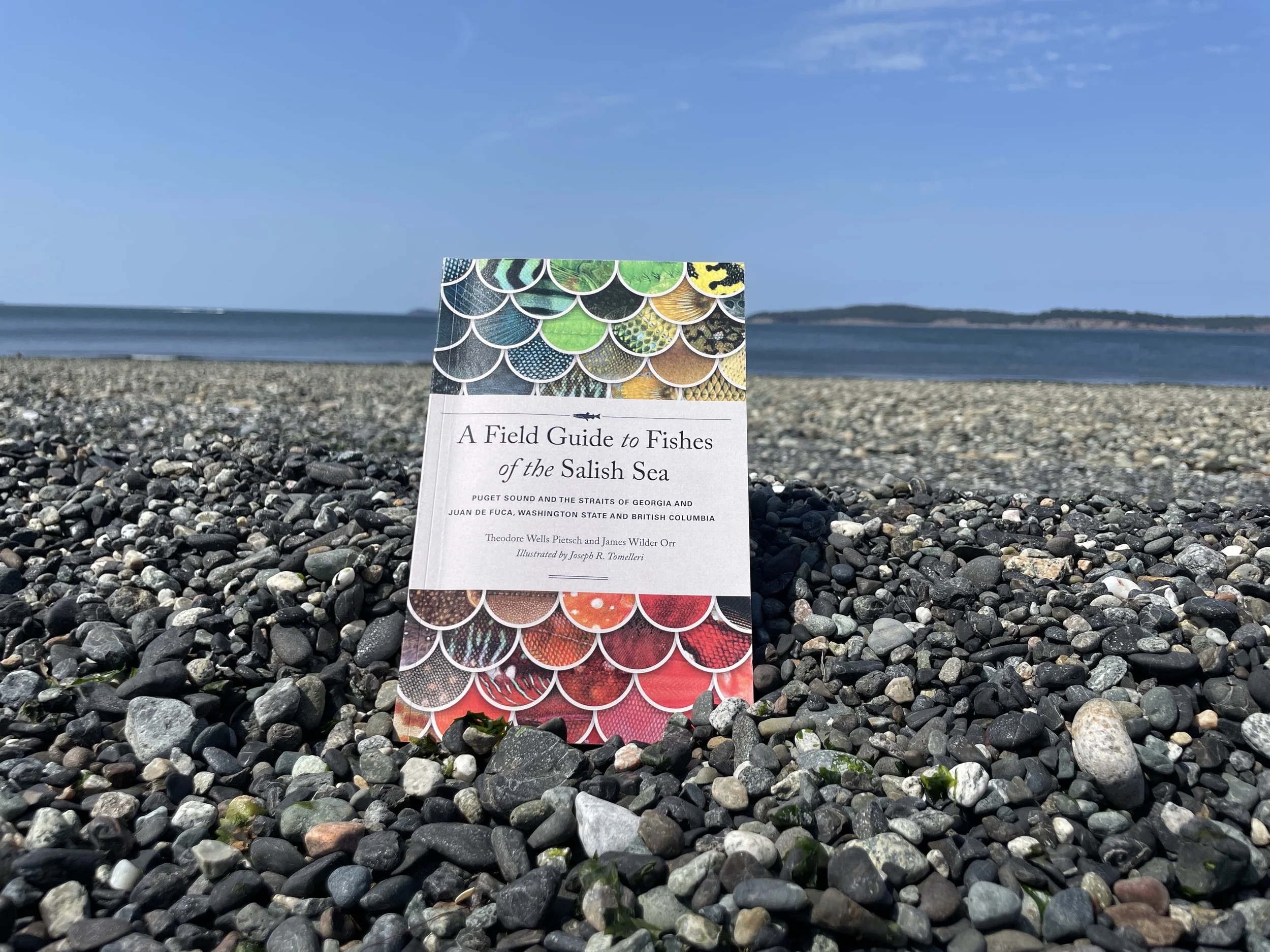The following is a book review of A Field Guide to Fishes of the Salish Sea, written by T. W. Pietsch and J. W. Orr and illustrated by J. R. Tomelleri (Chatwin Press, ISBN 978-1-63398-162-1)
By Joseph K. Gaydos, VMD, PhD
Wildlife Veterinarian and Science Director, the SeaDoc Society
Co-author of The Salish Sea: Jewel of the Pacific Northwest and Explore the Salish Sea
The waters of the Salish Sea are deep and cold and can move as fast as 8 kts in some places when the tide is running. While these attributes are key to making our inland sea so biologically productive, they also paint an image of foreboding water for some. Unfortunately, people also mistakenly presume that the fishes of these waters are as dark and murky and unwelcoming as the water itself. I predict that this misconception about our local fishes is going to change with the recent release of Ted Pietch and Jim Orr’s A Field Guide to Fishes of the Salish Sea.
In addition to providing traditional field guide information such as identifying features, size, distribution, and habitat for each of the 260 species of fish that call the Salish home, Joe Tomelleri has illustrated the guide with scientific precision and breathtaking beauty. Page after page of fishes decked out in bright red, green, yellow, and blue will give any book on tropical reef fish a run for its money and will fascinate fish geeks and fish neophytes alike.
And did I mention diversity? Sure, we have five species of Pacific salmon in the Salish Sea, but that pales in comparison to our sculpin. The descriptions and detailed illustrations will help you decipher between sculpins of every size, body shape, and color: rosylip, bonehead, scalyhead, smoothhead, threadfin, spotfin, longfin, fluffy, thin, and ribbed, just to name a few of the 34 species known to occur here.
Not into fish ID? Just flipping through the book and enjoying the names of the fish is enough to make you giggle on a bad day: pricklebreast poacher, blackfin fathead, slimy snailfish, longsnout prickleback, shortfin eelpout, giant wrymouth, mosshead warbonnet. Clutch words for a sonnet, rap, or haiku abound as do new pet titles for that angry neighbor of yours.
While I’m the first to admit that I’ll often read a field guide like a novel, I still feel this book will appeal to more than fishers, SCUBA divers, and snorkelers wanting to ID fish. Artists will be inspired by fish patterns, shapes, and colors, dyed in the wool Pacific Northwesterners will embrace new spirit fish, and pickleball players, … well, they’ll probably just keep talking about pickleball. Hey, one book can’t change everybody.
Pick up a copy. I think you’ll have trouble putting it down. With so many fishes in the sea, isn’t about time for you to start learning about your neighbors?

